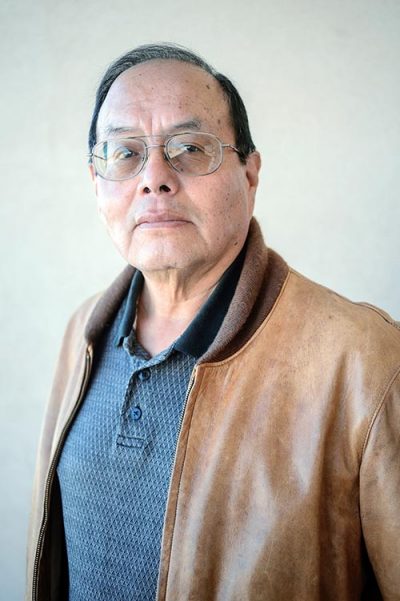
For us, standing in line is nothing new
A friend came by the other day. She said living under the cloud of the coronavirus is scary.
“Did you get the shot?” I asked.
She replied, “First or second?”

Duane A. Beyal
I don’t know if our easy acceptance of the protocols that surround the virus is an aftereffect of standing in line at boarding – or any – school when we were young.
My shinaii, Peterson Zah, when he served as chairman joked to a crowd of young people that he was always last in line due to his name’s spelling.
Well, I was near the front of the line whenever we stood in line at Church Rock Elementary waiting for eye exams or the variety of shots we were given.
Standing in line is second nature to Native Americans, one observer noted, because we are so used to it from boarding school.
While my elementary school was not a boarding school, it was nearly the same since most of us, except for a lone white or Mexican student, were all “Indians.”
Yes, we sang at Christmas programs and cheered on the good guys (U.S. Cavalry) at the mid-day movies often shown in our gym.
But we marched like soldiers to the lunch line, or down the hall for immunizations, or cheered on cue during assemblies.
So the long lines for vaccines today are an expected part of what we must do. There’s no Mrs. Stafford, Miss Bia or Mr. Chambellan ordering us what to do and when, but we fall into line without hesitation.
The vaccine for COVID-19 comes in two doses, the second two or three weeks after the first. So knowing this leads to quick understanding of “first or second shot?”
Well, now that everyone is standing in line, they know a bit about what it’s like to grow up a Native American.
A salute
As reported in this week’s story “Navajo leads the country in vaccine rollout,” about 98% of the tribe’s vaccine supply has been used, and another 28,000 doses are expected this weekend.
While it is as easy for us to get in line for shots as it is to queue up to get into Walmart, we should take a moment to consider the work being done to prick us all in the (left or right) shoulder.
We are talking thousands of doses that must be kept below freezing temperatures. Then there is the handling of long lines of traffic – which was not included in medical school training.
I have not heard of any difficulty with the long lines of cars and pickups, so once again our get-in-line training may be why.
But a lot of the credit for this success is the medical staff of the Navajo Area Indian Health Service and those who are helping them.
I saw them carrying what looked like coolers, sometimes escorted by Navajo Police, then prepping the doses, then bringing in the lines of people – all socially distanced and masked – and finally sitting across from you and asking final questions and giving final instructions, until – prick! – the needle painlessly delivers the serum.
Then you are herded to a waiting area to wait 15 minutes just in case you have a reaction to the shot. As sheepherders (shepherds, I’ve been told is correct, but I prefer the longer version), we know this drill too.
“Come over here, sit down, and stay there,” Mrs. Carter told me in the second grade.
The only time a group of us Navajos objected to being corralled was at a basketball game between the Gallup Lady Bengals and La Cueva in Albuquerque.
Knowing Gallup always had a large following of fans, school officials tried to mark off a section of the bleachers for us. However, our numbers were too big for that.
But waiting 15 minutes after receiving the first does of the Pfizer vaccine, I noticed no one objecting or having any difficulty. A staffer kept coming by asking if I was OK.
So from delivery, to prepping, to traffic and crowd control, to the actual shot, here’s a hand to all the medical staff and their helpers for a job well done.
Thank you.
Thanks also to the staff in the controller’s office who have worked to process tens of thousands of applications for the Hardship Assistance Program.
We may never know their names but they also have done a great job after the Navajo Nation Council and the president finally came to their senses and realized a per capita payment was the only way to meet the deadline to spend the CARES Act money.
Like the many Navajo Area IHS workers, we don’t know all your names but our financial staff deserves a clap of our hands.
To each and every one of you: Thank you.
As a public service, the Navajo Times is making all coverage of the coronavirus pandemic fully available on its website. Please support the Times by subscribing.
How to protect yourself and others.
Why masks work. Which masks are best.
Resources for coronavirus assistance








 Highway 264,
Highway 264, I-40, WB @ Winslow
I-40, WB @ Winslow